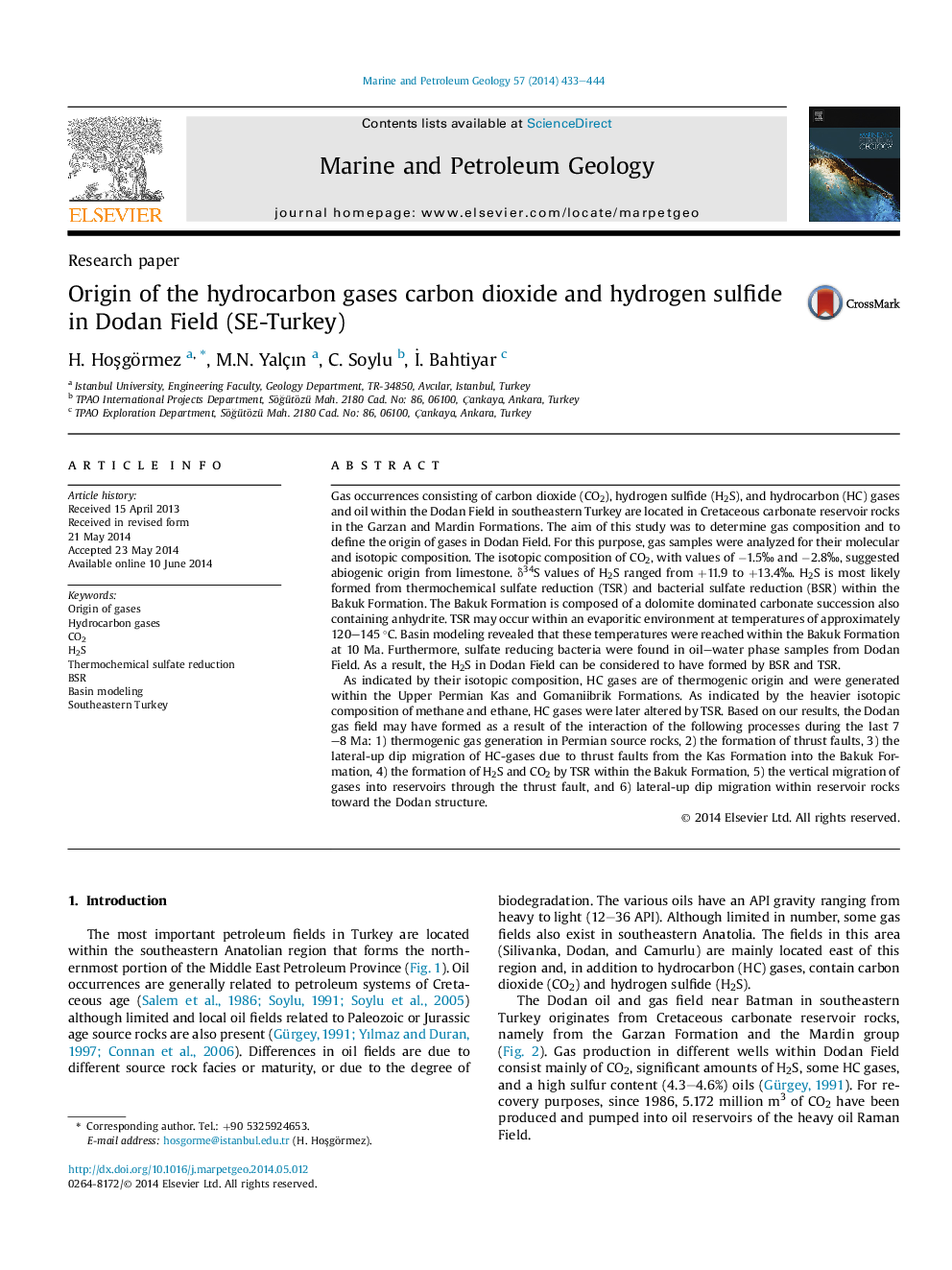| کد مقاله | کد نشریه | سال انتشار | مقاله انگلیسی | نسخه تمام متن |
|---|---|---|---|---|
| 6435375 | 1637167 | 2014 | 12 صفحه PDF | دانلود رایگان |

- Hydrocarbon gases are formed by thermal degradation of organic matter.
- Kas and Gomaniibrik formations are the most probable source rock of the hydrocarbon gases.
- The origin of H2S is the thermochemical sulfate reduction (TSR) process.
- A part of H2S could also be formed by the bacterial sulfate reduction (BSR).
- CO2 has a limestone origin and is formed both by TSR and acidolysis during TSR.
Gas occurrences consisting of carbon dioxide (CO2), hydrogen sulfide (H2S), and hydrocarbon (HC) gases and oil within the Dodan Field in southeastern Turkey are located in Cretaceous carbonate reservoir rocks in the Garzan and Mardin Formations. The aim of this study was to determine gas composition and to define the origin of gases in Dodan Field. For this purpose, gas samples were analyzed for their molecular and isotopic composition. The isotopic composition of CO2, with values of â1.5â° and â2.8â°, suggested abiogenic origin from limestone. δ34S values of H2S ranged from +11.9 to +13.4â°. H2S is most likely formed from thermochemical sulfate reduction (TSR) and bacterial sulfate reduction (BSR) within the Bakuk Formation. The Bakuk Formation is composed of a dolomite dominated carbonate succession also containing anhydrite. TSR may occur within an evaporitic environment at temperatures of approximately 120-145 °C. Basin modeling revealed that these temperatures were reached within the Bakuk Formation at 10 Ma. Furthermore, sulfate reducing bacteria were found in oil-water phase samples from Dodan Field. As a result, the H2S in Dodan Field can be considered to have formed by BSR and TSR.As indicated by their isotopic composition, HC gases are of thermogenic origin and were generated within the Upper Permian Kas and Gomaniibrik Formations. As indicated by the heavier isotopic composition of methane and ethane, HC gases were later altered by TSR. Based on our results, the Dodan gas field may have formed as a result of the interaction of the following processes during the last 7-8 Ma: 1) thermogenic gas generation in Permian source rocks, 2) the formation of thrust faults, 3) the lateral-up dip migration of HC-gases due to thrust faults from the Kas Formation into the Bakuk Formation, 4) the formation of H2S and CO2 by TSR within the Bakuk Formation, 5) the vertical migration of gases into reservoirs through the thrust fault, and 6) lateral-up dip migration within reservoir rocks toward the Dodan structure.
Journal: Marine and Petroleum Geology - Volume 57, November 2014, Pages 433-444